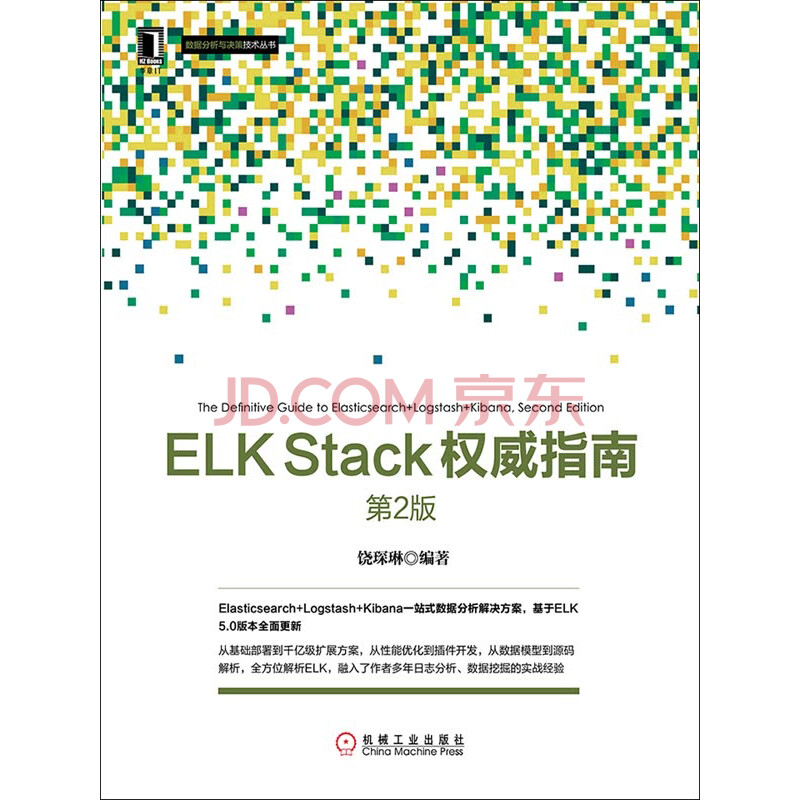Elasticsearch 官方和社区提供了各种各样的客户端库,在之前的博客中,我陆陆续续提到和演示过 Perl 的,Javascript 的,Ruby 的。上周写了一版 Python 的,考虑到好像很难找到现成的示例,如何用 python 批量写数据进 Elasticsearch,今天一并贴上来。
#!/usr/bin/env pypy
#coding:utf-8
import re
import sys
import time
import datetime
import logging
from elasticsearch import Elasticsearch
from elasticsearch import helpers
from elasticsearch import ConnectionTimeout
es = Elasticsearch(['192.168.0.2', '192.168.0.3'], sniff_on_start=True, sniff_on_connection_fail=True, max_retries=3, retry_on_timeout=True)
logging.basicConfig()
logging.getLogger('elasticsearch').setLevel(logging.WARN)
logging.getLogger('urllib3').setLevel(logging.WARN)
def parse_www(logline):
try:
time_local, request, http_user_agent, staTus, remote_addr, http_referer, request_time, body_bytes_sent, http_x_forwarded_proto, http_x_forwarded_for, http_host, http_cookie, upstream_response_time = logline.split('`')
try:
upstream_response_time = float(upstream_response_time)
except:
upstream_response_time = None
method, uri, verb = request.split(' ')
arg = {}
try:
url_path, url_args = uri.split('?')
for args in url_args.split('&'):
k, v = args.split('=')
arg[k] = v
except:
url_path = uri
# Why %z do not implement?
date = datetime.datetime.strptime(time_local, '[%d/%b/%Y:%H:%M:%S +0800]')
ret = {
"@timestamp": date.strftime('%FT%T+0800'),
"host": "127.0.0.1",
"method": method.lstrip('"'),
"url_path": url_path,
"url_args": arg,
"verb": verb.rstrip('"'),
"http_user_agent": http_user_agent,
"status": int(staTus),
"remote_addr": remote_addr.strip('[]'),
"http_referer": http_referer,
"request_time": float(request_time),
"body_bytes_sent": int(body_bytes_sent),
"http_x_forwarded_proto": http_x_forwarded_proto,
"http_x_forwarded_for": http_x_forwarded_for,
"http_host": http_host,
"http_cookie": http_cookie,
"upstream_response_time": upstream_response_time
}
return {"_index":"logstash-mweibo-www-"+date.strftime('%Y.%m.%d'), "_type":"nginx","_source":ret}
except:
return {"_index":"logstash-mweibo-www-"+datetime.datetime.now().strftime('%Y.%m.%d'), "_type":"nginx","_source":{"message":logline}}
def get_log():
start_time = time.time()
log_buffer = []
while True:
try:
line = sys.stdin.readline()
except:
break
if not line:
helpers.bulk(es, log_buffer)
del log_buffer[0:len(log_buffer)]
break
if line:
ret = parse_www(line.rstrip())
log_buffer.append(ret)
while ( len(log_buffer) > 2000 and len(log_buffer) % 2000 == 0 ):
try:
helpers.bulk(es, log_buffer)
except ConnectionTimeout:
print("try again")
continue
del log_buffer[0:len(log_buffer)]
break
else:
if (time.time() - startime > timeout ):
helpers.bulk(es, log_buffer)
start_time = time.time()
del log_buffer[0:len(log_buffer)]
time.sleep(1)
if __name__ == '__main__':
get_log()
和 Perl、Ruby 的客户端不同,Python 的客户端只支持两种 transport 方式,urllib3 或者 thrift。也就是说,木有像事件驱动啊之类的办法。
测试一下,这个脚本如果不发送数据,一秒处理日志条数在15k,发送数据,一秒只有2k。确实比较让人失望,于是决定换成 pypy 试试——我司不少日志处理脚本都是用 pypy 运行的。
服务器上使用 pypy ,是通过 EPEL 安装的,之前都只用核心模块,这次需要安装 elasticsearch 模块。所以需要先给 pypy 加上 pip:
wget https://raw.github.com/pypa/pip/master/contrib/get-pip.py
pypy get-pip.py
网上大多说之前还要下载一个叫 distribute_setup.py 的脚本来运行,实测不需要,而且这个脚本的下载链接也失效了。
然后通过 pip 安装 elasticsearch 包即可:
/usr/lib64/pypy-2.0.2/bin/pip install elasticsearch
测试,pypy 比 python 处理日志速度快一倍,写 ES 速度快一半。不过 3300eps 依然很慢就是了。
测试中碰到的其他问题
可以看到脚本里已经设置了多次重试和超时重连,不过依然会收到写入超时和失败的返回,原来 Elasticsearch 默认对每个 node 做 segment merge 的时候,有磁盘保护措施,速度上限限制在 20MB/s。这在压测的时候就容易触发。
[2015-01-10 09:41:51,273][INFO ][index.engine.internal ] [node1][logstash-2015.01.10][2] now throttling indexing: numMergesInFlight=6,maxNumMerges=5
修改配置重启即可:
indices.store.throttle.type:merge
indices.store.throttle.max_bytes_per_sec:500mb
关于这个问题,ES 也有讨论:Should we lower the default merge IO throttle rate?。或许未来会有更灵活的策略。
更多 ES 性能测试和优化建议,参考:http://www.elasticsearch.org/guide/en/elasticsearch/guide/current/indexing-performance.html



